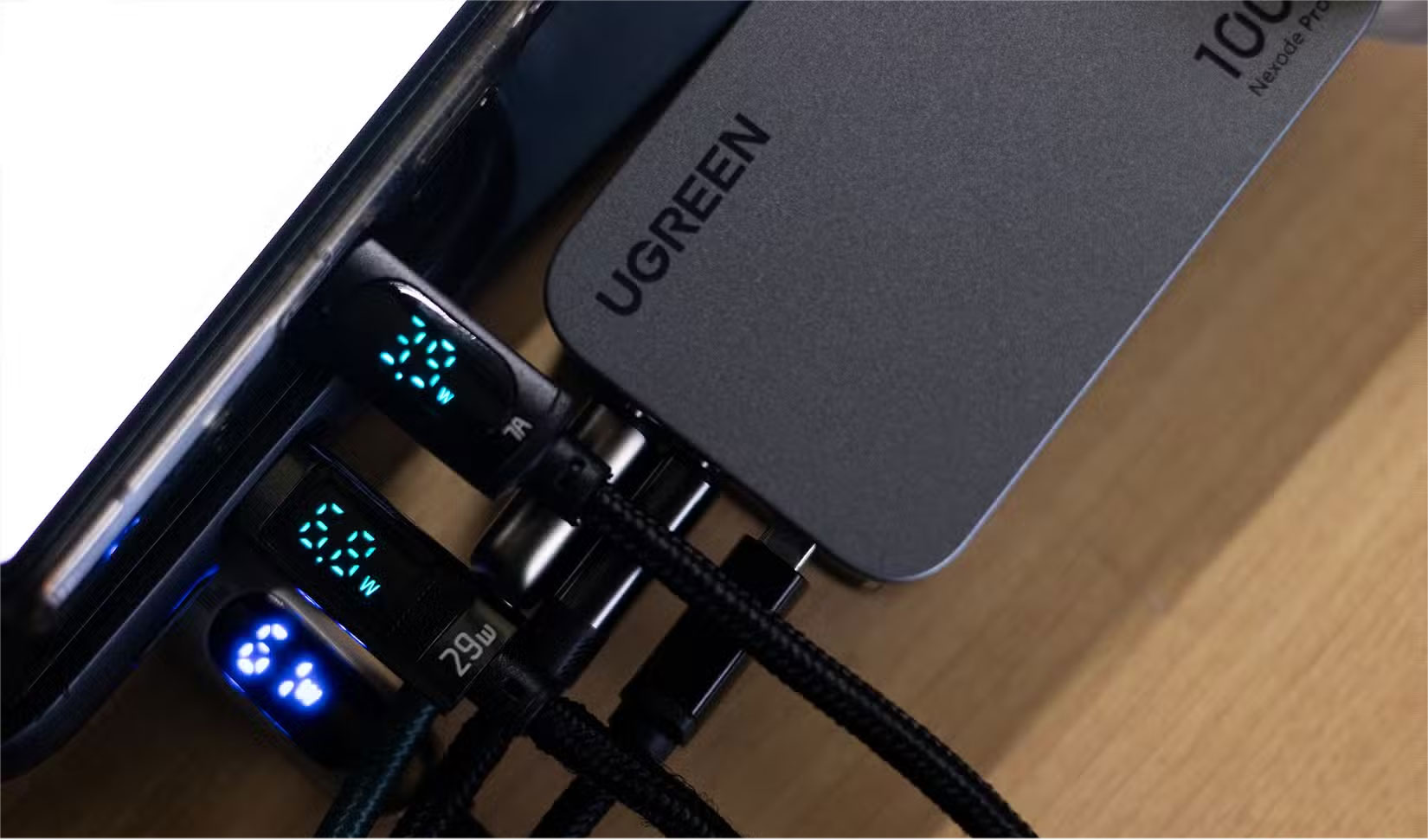Why do future laptops need USB-C ports on both sides?
The placement of your laptop's USB-C port matters more than you might think. Having two USB-C ports that support Power Delivery—one on each side—changes the way you work, move, and connect your devices. Yet most manufacturers still overlook this essential feature.
4. Not all USB-C ports are created equal

While USB-C has many benefits, not all USB-C ports are created equal. Many laptops today come with multiple USB-C ports, but their capabilities can vary widely. Some can provide up to 240W for fast charging, while others only provide 15W. Some ports handle data only, while others handle power only; many support both, although the speeds and specifications vary. Data transfers can range from basic USB 2.0 to high-speed Thunderbolt 4 , so it's worth looking into exactly what each port is capable of.
To be clear, you should get a laptop with two USB-C ports, both of which support full Power Delivery charging. Not one charging port and one data port. Not one full charging port and one limited accessory port. Two equivalent ports, each capable of handling the entire charging needs of the laptop.
3. A faulty port means a broken laptop
If a laptop only has one charging port and it breaks, the device is no longer usable. While USB-C ports are officially rated to withstand at least 10,000 plug-and-unplug cycles, they are more susceptible to wear and tear than traditional chargers because they handle multiple functions—charging, display, storage, and peripherals. Every plug-and-unplug puts stress on the connection, and that single port has to take all the strain.
Even if USB-C ports are repairable, they can be expensive. Repairing them requires specialized equipment and expertise to solder and replace the port, which is much more complicated than repairing a traditional jack. If the damage affects the motherboard's power supply circuits or power chips, you may have to replace the entire motherboard, which is much more expensive.
2. Gates on both sides make life easier
Having two USB-C ports is great, but placement is just as important. Having charging ports on both sides of your laptop makes life a lot easier. At your desk, you can plug in from whichever side is closer to the outlet, so you don't have to worry about cables running all over your workspace. At a coffee shop or on a plane, you can use whichever side is easiest to plug in without having to drag the cable across your lap or into someone else's space.
This isn't just convenient; it also makes for better organization. You can charge on one side and plug in a mouse, keyboard, or hub on the other, so cables don't get tangled in one place. It even helps your laptop ports last longer, since you don't have to use the same one over and over again. If you use USB-C for charging, data, and accessories, having ports on both sides makes life easier.
1. Why do laptop manufacturers continue to cut costs on ports?

Manufacturers avoid putting USB-C ports on both sides for three main reasons: Cost, design priority, and profit.
First, adding a high-powered USB-C port on the opposite side isn't as simple as punching another hole in the chassis. It requires redesigning the entire motherboard to properly route high-speed, high-power connections to both sides. It also requires duplicating expensive power delivery controllers and protection circuitry, plus managing the heat generated by components spread throughout the device. All of this adds complexity, design time, and cost.
Second, brands continue to pursue ultra-thin designs at the expense of practicality. Every port needs space inside, not just outside. Instead of balancing form and function, companies are opting for thinness over useful features because they know people will buy the thinnest laptop on the market, even if it means using dongles and dealing with tangles of cables.
Third, the extra ports are advertised as a premium feature. The base models have streamlined port layouts, while even some of the high-end models don't have obvious features like reversible USB-C. If you want more than one USB-C port for charging, you'll have to buy the $2,000 Pro model. This is intentional and effective—people pay more for features that should be standard.
One of the reasons to love Framework's modular laptop is that it solves a common misconception about ports. A small company figured out how to put USB-C on both sides with swappable modules, while tech giants with billion-dollar R&D budgets found it too complicated to add the necessary flexibility. The modular approach is certainly more expensive, but it exposes the big brands' excuse for what it is: laziness disguised as technical limitations.
You should read it
- Summary of some simple ways to disable USB ports on Windows computers
- 16 connection ports are commonly found on computers and their functions
- What is DVI port? Classification of popular DVI ports today
- Instructions to scan the network port with Advanced Port Scanner
- How to find open and blocked TCP / UDP ports
- What is Type C charging port? Should I use it or not?
 Don't buy a cheap laptop if it doesn't pass these tests!
Don't buy a cheap laptop if it doesn't pass these tests! What is AMD CPU? Advantages and disadvantages of AMD CPU
What is AMD CPU? Advantages and disadvantages of AMD CPU Why is the Amazon Fire TV Stick 4K better than Chromecast in 2025?
Why is the Amazon Fire TV Stick 4K better than Chromecast in 2025? 8 mistakes that are killing your power bank
8 mistakes that are killing your power bank Why Mini PC is all you need?
Why Mini PC is all you need? How to Unlock the Full Potential of Your Fire TV Stick
How to Unlock the Full Potential of Your Fire TV Stick